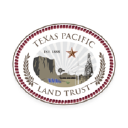/ factorpad.com / stocks / f48kpb.html
An ad-free and cookie-free website.
Our quantitative data points are meant to provide a high-level understanding of factors in equity risk models for Texas Pacific Land Trust. Portfolio managers use these models to forecast risk, optimize portfolios and review performance.
We show how TPL stock compares to 2,000+ US-based stocks, and to peers in the Mining, Quarrying, and Oil and Gas Extraction sector and Crude Petroleum and Natural Gas Extraction industry.
Please do not consider this data as investment advice. Data is downloaded from sources we deem reliable, but errors may occur.
 Texas Pacific Land Corporation is one of the largest landowners in the State of Texas with approximately 880,000 acres of land in West Texas. The Corporation is not an oil and gas producer, but its surface and royalty ownership allow revenue generation through the entire value chain of oil and gas development, including through fixed fee payments for use of the land, revenue for sales of materials (caliche) used in the construction of infrastructure, providing sourced water and treated produced water, revenue from its oil and gas royalty interests, and revenues related to saltwater disposal on the land. The Corporation also generates revenue from pipeline, power line and utility easements, commercial leases, material sales and seismic and temporary permits related to a variety of land uses including midstream infrastructure projects and hydrocarbon processing facilities.
Texas Pacific Land Corporation is one of the largest landowners in the State of Texas with approximately 880,000 acres of land in West Texas. The Corporation is not an oil and gas producer, but its surface and royalty ownership allow revenue generation through the entire value chain of oil and gas development, including through fixed fee payments for use of the land, revenue for sales of materials (caliche) used in the construction of infrastructure, providing sourced water and treated produced water, revenue from its oil and gas royalty interests, and revenues related to saltwater disposal on the land. The Corporation also generates revenue from pipeline, power line and utility easements, commercial leases, material sales and seismic and temporary permits related to a variety of land uses including midstream infrastructure projects and hydrocarbon processing facilities.
Many of the following risk metrics are standardized and transformed into quantitative factors in institutional-level risk models.
Rankings below represent percentiles from 1 to 100, with 1 being the lowest rating of risk.
Stocks with higher beta exhibit higher sensitivity to the ups and downs in the market. (↑↑)
Stocks with higher market capitalization often have lower risk. (↑↓)
Higher average daily dollar volume over the past 30 days implies lower liquidity risk. (↑↓)
Higher price momentum stocks, aka recent winners, equate to lower risk for many investors. (↑↓)
Style risk factors often include measures of profitability and payout levels.
Companies with higher earnings generally provide lower risk. (↑↓)
Companies with higher dividend yields, if sustaintable, are perceived to have lower risk. (↑↓)
/ factorpad.com / stocks / f48kpb.html
A newly-updated free resource. Connect and refer a friend today.